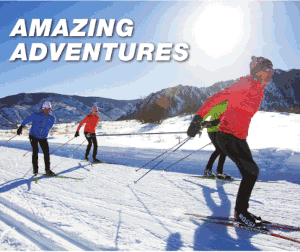October 06, 2016 (Zurich, SUI) – The FIS Technical Committee Meetings in Zurich (SUI) concluded on October 1, 2016 after four days of meetings. With the focus on the final preparations for the 2016/17 season. The main rule change surrounds the maximum pole length in classic technique to preserve the use of diagonal striding. The maximum pole length can be 83% of body height, measured with boots, and for the length of the pole from the tip to where the strap enters the pole. The new rule will be applied at all FIS competitions, including popular races.
Q&A maximum classic technique poles
Why was this rule accepted? What is the primary goal of the rule?
The primary goal of the rule is not to ban double poling but to add an additional tool to protect classical technique and all its aspects (diagonal, double poling, kick double poling, herringbone) so that competitions in classical technique are fair for everybody.
After two years of discussions, surveys, experiences and scientific studies it was time to give a signal and to provide answers to the Cross-Country community. The great majority is in favour of two techniques (classic and free technique). The Committee also agreed that if classical technique should develop to only double poling without kick wax, it will be a technique, which is impossible to control. Double poling is not seen as an independent technique and no events are going to take place in only double poling by definition, in the future.
The Cross-Country Committee underlined the necessity to involve in the discussion on the future of Classic technique a wide range of people working or competing at different competition levels. Even if the current situation seems to be more or less under control at the World Cup level, the situation is definitely more challenging at lower levels and Popular races. The current developments in training methods and use of equipment especially for the young athletes are also some important factors that were taken into consideration.
Who proposed and accepted this rule?
The decision making process in the FIS is complex. The Council is the supreme authority of FIS and between the Congresses makes all necessary decisions. The Council appoints the Chairmen and the Members of Committees, Sub-Committees and Working Groups that shall be advisory to the Council and shall be responsible for the technical and other specified activities of the FIS.
Former elite Cross-Country Skiers, head coaches of national teams, directors of Cross-Country skiing/Nordic NSAs departments and other experts represent their National Ski Associations at the Cross-Country Committee and its Sub-Committees.
The Cross-Country Committee received the maximum pole length proposal from the German Ski Association in the summer 2016. All Committee members received this proposal with a task to discuss it in their National Ski Associations. At the FIS Autumn meeting in Zurich the proposal was discussed at the Sub-Committee for Rules and Control, at the Sub-Committee for World and Continental Cups and at the Cross-Country Committee.
After an open and democratic discussion, the Cross-Country Committee unanimously accepted the proposal, with a modification of the maximum pole length definition.
Why was it accepted at the FIS Autumn Meeting and not in the spring?
For several years, the Cross-Country community has been discussing the future of classic technique. Cross-Country Skiing has been facing an intensive evolution comparable to emergence of free technique in the mid 80’s. The evolution of double poling has been challenging the core of the Cross-Country Skiing sport. Several measures to slow down this development have been put in place (see paragraph 5).
Ideally the maximum pole length should have been decided in June but the evolution has been quick. After long discussions during the meetings in Cancun, Mexico, each NSA was asked to go through all the aspects of the problem at all competition levels. The outcome was a concrete proposal from Germany, which came during the summer.
Why 83% of body height?
Feedback from many coaches was that a lot of athletes this summer, were testing classical poles which were more than 10 cm longer than last year. The original proposal submitted by the German Ski Association was 85% of body length (average pole length used by the athletes in the last years), measured without boots and for the total length of the pole. 83% of body height is measured with boots, and for the length of the pole from the tip to where the strap enters the pole.
Will it save classic?
The maximum pole length rule does not stand alone in the attempt to preserve classic technique. It is only one out of a set of tools. For a few years now a lot of attention has been paid to finding suitable courses for classical technique competitions. Cross-Country Juries have been stricter and have been sanctioning half skating steps, gliding phase in herringbone, skating in corners etc. Additionally, the decision making process of the Jury in classical technique rules infractions has been made faster.
As well, many National Ski Associations are going to test technique zones where double poling will be forbidden. Now the Cross-Country Committee has introduced a maximum pole length rule of 83 %. This will not stop anyone from double poling even in steep uphills but it is expected to stop the unwanted evolution of classic technique. The experiences from the upcoming season will be carefully examined next spring and further steps including a lowering of the percentage may be discussed.
Does this rule apply to the FIS Cross-Country World Cup only?
No, the 83% body length rule applies to all FIS competitions and for all age groups.
How will the new rule be enforced?
The pole measurement device should already be available during official training so that athletes can check their equipment themselves. The controls will be performed randomly and/or will be targeted. It will be possible to perform the measurements before the start and after the finish. If necessary, more than one measurement device will be available.
What happens if an athlete comes to the start with wrong length of poles?
Athletes with equipment not compliant with the ICR will not be permitted to start.
What happens if a competitor breaks a pole in a competition?
Breaking a pole in competition is very common, especially in mass starts, pursuits and sprints. When an athlete breaks a pole they need a new one as soon as possible. It is possible that the new pole will not match with the 83% rule. In this case, skiing with poles of different lengths is seen not as an advantage. The size of the given pole is irrelevant and athlete can finish the competition without any sanction.
What happens if a competitor breaks both poles in a competition?
If both poles are broken in the competition and athlete gets a new pair, the poles must comply with the 83% body length rule.






![National camp action [P]...](https://skitrax.com/wp-content/uploads/2019/08/Duluth-4-2019-08-08-at-10.46.51-AM-300x246.png)
![Matt Liebsch on the CXC Elite Team [P] CXC...](https://skitrax.com/wp-content/uploads/2019/08/Matt-Liebsch-CXC.2-525x700.4-300x267.jpg)
![Dan LaBlanc [P]...](https://skitrax.com/wp-content/uploads/2019/08/Dan-LaBlanc-img_1855.3.jpg)
